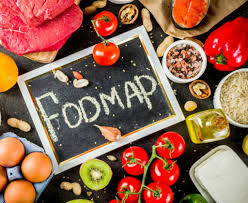FODMAP is an acronym that refers to fermentable oligosaccharides, disaccharides, monosaccharides, and polyols — types of carbohydrates that can be difficult to digest for some individuals.

What we eat has a profound effect on how we feel, and digestive issues like bloating and cramps are incredibly widespread. Many people find that cutting back on FODMAPs significantly eases their symptoms.
This article offers a comprehensive overview of FODMAPs and how a low FODMAP eating plan may benefit your digestive health.
What Are FODMAPs?
FODMAPs are short-chain carbohydrates that resist digestion in the small intestine (1). Instead of being broken down and absorbed, they travel to the large intestine, where they are fermented by gut bacteria.
This fermentation can lead to hydrogen gas production and pull excess water into the gut, triggering symptoms like bloating, cramping, and diarrhea — especially in people with sensitive digestive systems like those who have IBS (Irritable Bowel Syndrome) (2).
Common types of FODMAPs include:
-
Fructose: Naturally found in fruits, vegetables, and added sugars.
-
Lactose: A sugar present in milk and dairy products.
-
Fructans: Found in wheat, spelt, rye, barley, and certain vegetables.
-
Galactans: High in legumes like beans and lentils.
-
Polyols: Sugar alcohols (e.g., sorbitol, mannitol) found in some fruits and used as artificial sweeteners.
How FODMAPs Affect Digestion
Most FODMAPs move through the digestive tract without being absorbed, acting similarly to dietary fiber. While this is usually not a problem, those with a FODMAP intolerance may react differently.
When FODMAPs reach the colon, gut bacteria ferment them, releasing gases — particularly hydrogen. This can cause bloating, discomfort, pain, and altered bowel habits (3).
Additionally, since FODMAPs are osmotic, they can draw water into the bowel, worsening diarrhea in some individuals.
Why a Low FODMAP Diet May Help
Research primarily focuses on how this eating plan benefits individuals with IBS — a common condition that causes gas, bloating, stomach pain, constipation, and diarrhea. While its root causes are not fully understood, diet and stress are major factors (4, 5).
Cutting back on high FODMAP foods can often lead to significant relief and better quality of life for those with digestive sensitivities (6, 7).
Potential benefits include:
-
Reduced bloating
-
Less abdominal pain
-
Improved stool consistency (less diarrhea or constipation)
-
Decreased gas
-
Psychological improvements due to reduced digestive discomfort (12)
High-FODMAP Foods to Watch Out For
If you’re sensitive to FODMAPs, avoiding or limiting the following common high-FODMAP foods may be helpful (8):
Fruits:
Apples, cherries, pears, mangoes, watermelon, and more
Sweeteners:
Honey, high-fructose corn syrup, sorbitol, xylitol, agave
Vegetables:
Onions, garlic, cauliflower, Brussels sprouts, asparagus
Dairy:
Milk, yogurt, soft cheeses, sour cream
Legumes:
Lentils, chickpeas, kidney beans, soybeans
Grains:
Bread, pasta, crackers, cereal made from wheat, rye, barley
Drinks:
Fruit juice, kombucha, rum, soy milk, oat milk, chamomile tea
Foods You Can Eat on a Low FODMAP Plan
This diet doesn’t require cutting out all FODMAPs completely — just reducing them to a tolerable level. There are still plenty of nutritious, gut-friendly foods available (8):
Protein:
Fresh meat, fish, poultry, eggs (avoid processed versions with high-FODMAP additives)
Nuts & Seeds:
Peanuts, pine nuts, macadamias, sesame seeds
Fruits:
Unripe bananas, kiwi, oranges, grapes, strawberries, passionfruit
Vegetables:
Carrots, cucumbers, eggplant, spinach, bell peppers, tomatoes, green beans
Grains:
Rice, oats, quinoa, corn, tapioca
Dairy:
Lactose-free milk, aged cheeses (Brie, Camembert), hard cheeses
Other:
Oils, herbs, spices, maple syrup, stevia
Beverages:
Water, coffee, green and black tea
Note: Tolerance can vary greatly by individual, and portion sizes also affect how a food is tolerated. Trial and error is often required.
How to Start a Low FODMAP Diet
Most experts suggest eliminating all high-FODMAP foods for about 3–6 weeks to allow symptoms to settle.
Once symptoms improve, gradually reintroduce foods one at a time to identify specific triggers.
If your symptoms return after eating a certain food, you may choose to limit or avoid it long term.
It’s highly recommended to work with a healthcare provider or registered dietitian to ensure you’re not restricting unnecessarily and to help identify which types of FODMAPs you’re sensitive to (like fructose vs. lactose).
Final Thoughts
FODMAPs are indigestible carbohydrates that ferment in the gut, which can cause issues like bloating, gas, and stomach discomfort — especially in people with IBS or other functional gut disorders.
However, not everyone needs to avoid them. Many FODMAP-containing foods are highly nutritious and support healthy gut bacteria.
For those who are sensitive, temporarily reducing high-FODMAP foods can significantly ease symptoms and improve well-being.
If you suffer from ongoing digestive problems, trying a low FODMAP diet under professional guidance might help uncover what’s triggering your symptoms — and offer lasting relief.

